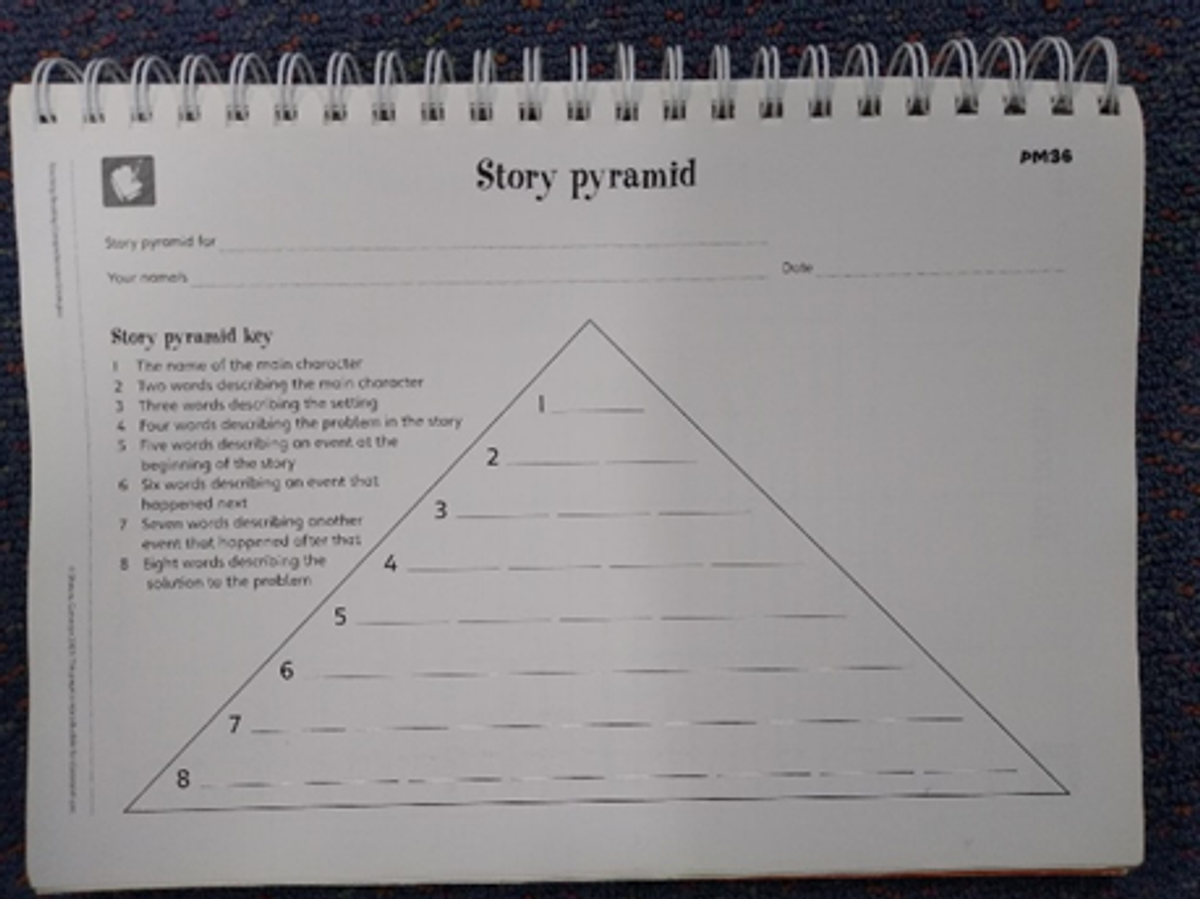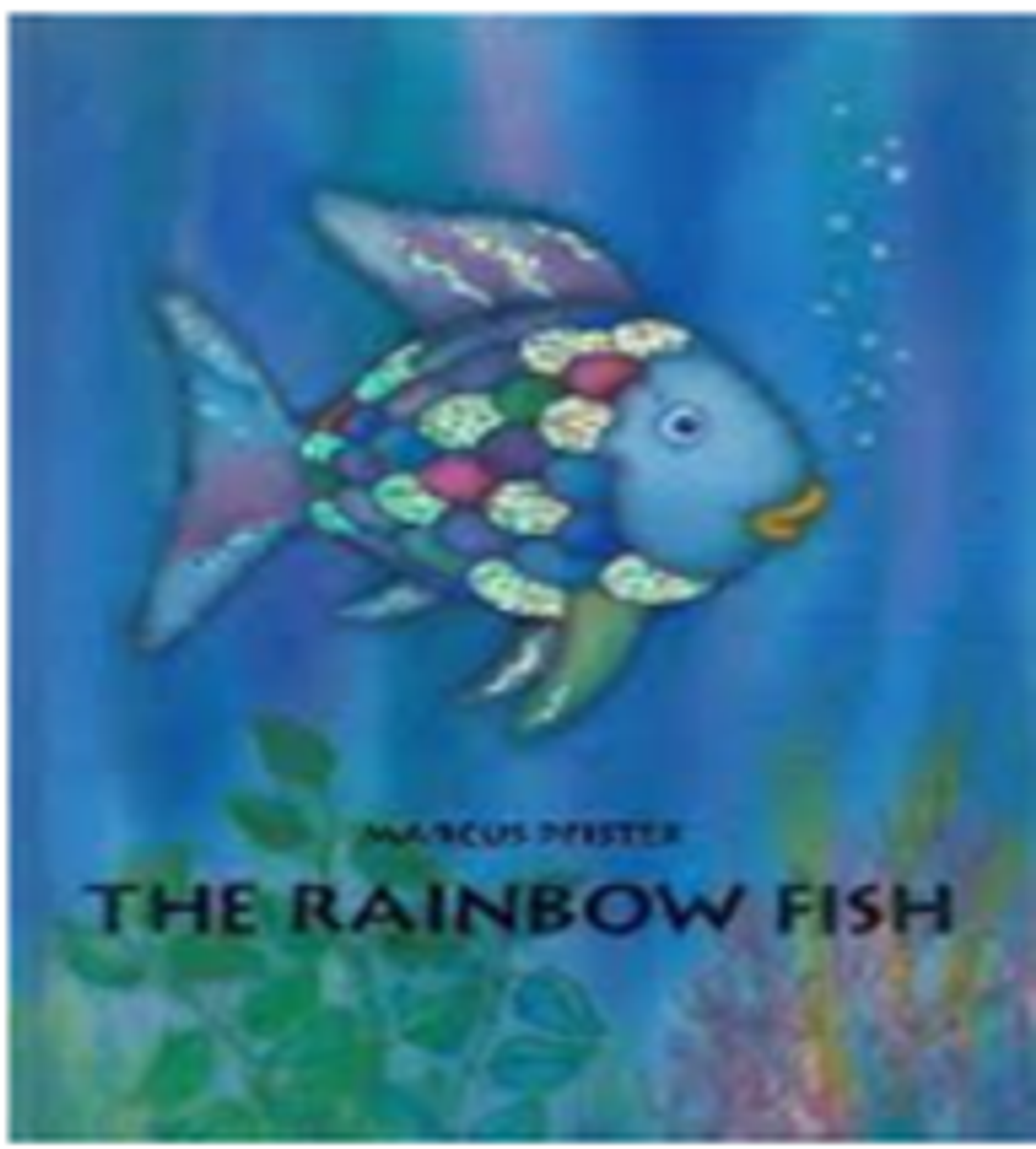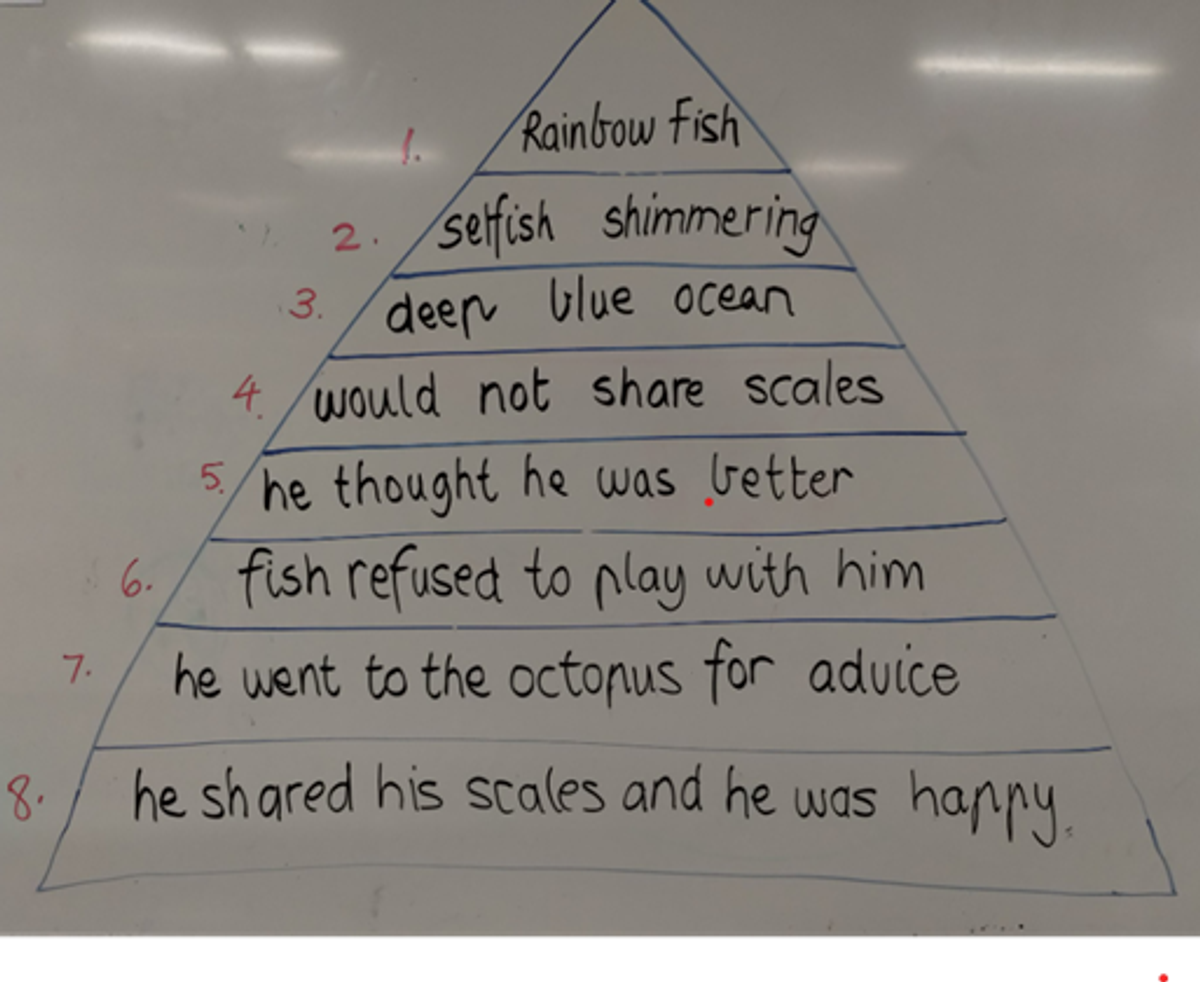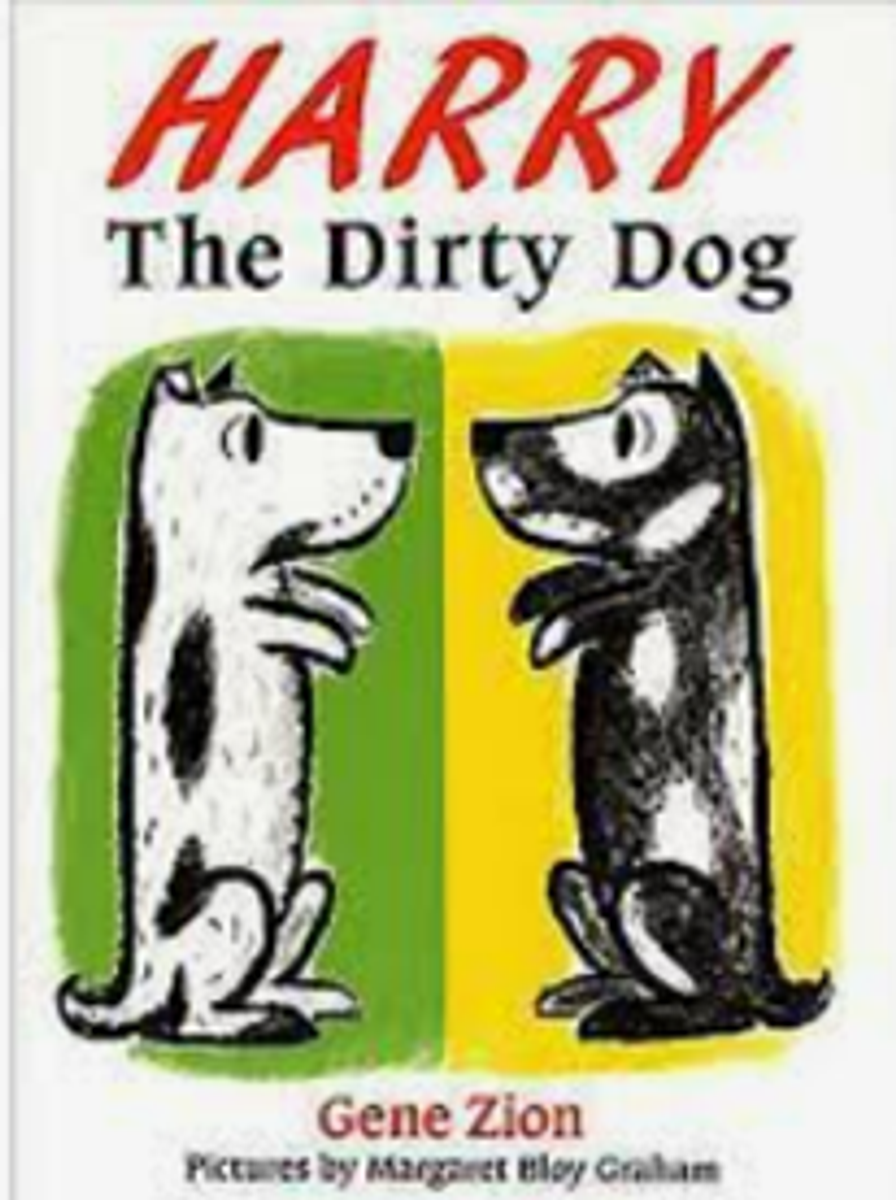Year 2 Bulletin
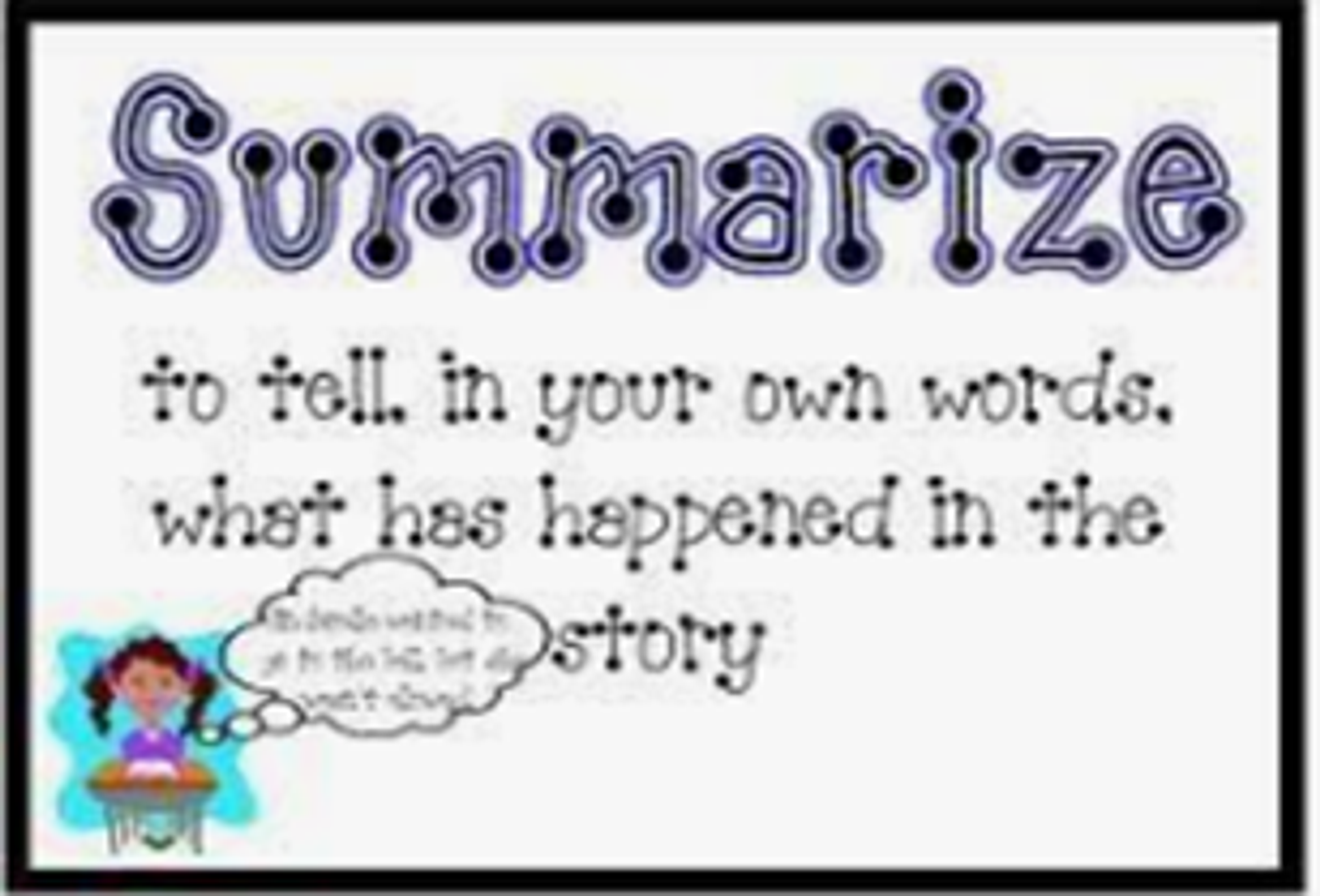
English - Reading
Literacy: Interpreting, Analysing, Evaluating
Comprehension Strategy: Summarising
Learning IntentionTo create a summary of a story in a few words, using the outline of a pyramid to contain the main ideas.
Learning experience overview
Launch:
In this activity, the concept of a Story Pyramid, was introduced. It helps students capture the main points of a story in a limited number of words. The arrangement of the words forms the shape of a pyramid. The pyramid acts as a graphic organiser that starts with one word at the top and adds a word onto each line below it. The activity helps students remember key points and summarise what they know.
The sequencing of the main ideas becomes the summary.
The Story Pyramid Key explains the structure of each of the eight lines, in the summary. The students must follow the specific requirements and use only the set number of words, for each line. Each line builds on, in the number of words required.
| Line 1 | One word | The name of the main character |
| Line 2 | Two words | Two words describing the main character |
| Line 3 | Three words | Three words describing the setting |
| Line 4 | Four words | Four words describing the problem in the story |
| Line 5 | Five words | Five words describing an event at the beginning of the story |
| Line 6 | Six words | Six words describing an event that happened next |
| Line 7 | Seven words | Seven words describing another event that happened after that |
| Line 8 | Eight words | Eight words describing the solution to the problem |
Modelling:
To begin, students viewed a visual text, the well-known story of ‘The Rainbow Fish’, by Marcus Pfister.
Then, both classes collaborated on building the pyramid, line by line, following the rules for the number and type of words, per line. We modelled the lines of the pyramid, according to the key.
Activity:
Students then viewed the visual text, ‘Harry the Dirty Dog’ by Gene Zion, illustrated by Margaret Bloy Graham, which their activity was based on.
They completed their own Story Pyramid, based on their interpretation of the text and understanding of the main ideas.
Going Forward, using the Story Pyramid:
Begin by asking them to retell the story, identifying the key points, being aware of the sequence of events. Use some of the question prompts, below, to help with their recall. Remind them of the importance of the order of events, and how that helps make meaning.
Students need to be able to:
- Identify the main ideas and their order in the story
- Note key information – words/facts/phrases/specific details
- Use the rules around the structure of the pyramid
The summary should include enough information to make sense to someone who hasn’t read the story before. Firstly, think about the important events in the story, probably connecting to the problem, or what the character wants the most. It must be clear how one event leads to another, and how the whole story ends up.
When summarising, it’s critical to tell what’s important. Tell it in the order that it happened. Tell it in a way that makes sense. Try not to tell too much.
Prompts/questions/responses
- Helpful questions to ask when summarising (including retelling) are:
- Who is/are the main character(s)?
- Tell me the one most important thing that happened in the beginning?
- Give me three events/things that happened in the middle?
- How do they connect to the beginning?
- What is the problem that the character is involved in?
- How does the character solve the problem(s)?
- What’s the most important thing that happened in the end?
- Can you say that in a shorter way?
Continue to encourage your child/ren to read a variety of text types for pleasure, and non-fiction texts to gain information. Spend time sharing their thoughts/responses/opinions, about the text with you.
Rosanna and Jocelyn
Year 2 Team

